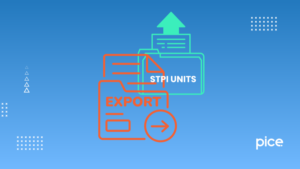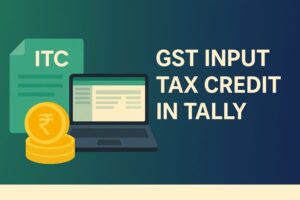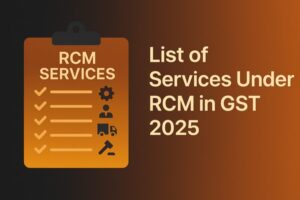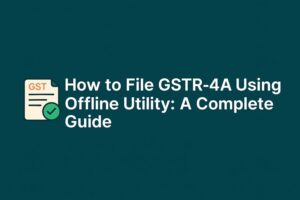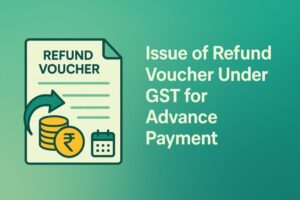A Comprehensive Guide on Form GST RFD 01
- 4 Apr 25
- 11 mins

A Comprehensive Guide on Form GST RFD 01
- What is RFD-01 and RFD-01A?
- Who Should File the Application in RFD-01 or RFD-01A?
- Types of Refunds Where RFD-01/01A is Applicable
- Cases Where RFD-01 and RFD-01A Should Not be Filed
- Prerequisites for Applying for a Refund
- Time Limit and Frequency of Filing RFD-01
- Format of RFD-01 and RFD-01A
- Calculation of the Refund Amount
- What is RFD-01B and RFD-01W?
- Follow-up After Filing the Refund Application
- Conclusion
Key Takeaways
- GST RFD-01 is an online form for claiming excess GST refunds.
- Refund claims must be filed within 2 years from the relevant date.
- Applicable for excess ITC, zero-rated exports, inverted duty, and deemed exports.
- CA verification and supporting documents are essential for refunds above ₹2 lakh.
- Monitor ARN status and respond promptly to deficiency notices (RFD-03).
Goods and Services Tax (GST) has streamlined the indirect tax system in India, offering transparency and efficiency. However, businesses often end up paying excess tax due to various reasons such as input tax credit (ITC) accumulation, export transactions, or incorrect tax payments. To claim a refund of such excess payment of tax, taxpayers must file Form GST RFD-01.
Anyone who is under the purview of GST can raise a refund claim for more taxes paid or excessive interest furnished compared to accumulated ITC in their electronic credit ledger by filing the RFD-01 form. Understanding its filing process, eligibility criteria, and documentation requirements is essential for compliance and smooth refunds.
In this guide, we will study in detail the GST RFD-01 application form utilised for a tax refund.
What is RFD-01 and RFD-01A?

Taxpayers can seek GST refunds through the RFD-01 form which is accessible on the GST portal. The RFD-01A form which served as an offline refund application tool is no longer used but has been replaced. The regulation enables refund disbursement only after the refund amount reaches a value exceeding ₹1,000.
RFD-01 facilitates the electronic processing of GST refunds. On the other hand, the RFD-01A functioned as the interim manual application system for RFD-01 during the period between the implementation of the online refund process's activation. The RFD-01A form constituted a manual application used for specific refund cases.
Who Should File the Application in RFD-01 or RFD-01A?
With the exceptions of deemed exports and SEZ supplies, businesses complete filing of refund application and obtain accumulated ITC on tax-free exports. Taxpayers gain the right to claim GST refunds when they mistakenly make surplus tax payments or accumulate extra cash balance in their electronic cash ledgers.
Furthermore, an unregistered person can raise a request for a refund due to the termination or cancellation of the contract for a particular supply of service. It is important to understand that The Invoice details given under Form GSTR-1 (Table 6A of Form GSTR-1) and as given in the refund statement must be the same.
Both the supplier alongside the refund applicant possess the right to request tax refunds on deemed exports and Special Economic Zone supplies. Two parties cannot apply for a refund on invoices that affect them similarly. The supplier needs to collect written confirmation from the recipient which states that the recipient will not file for a refund regarding that particular supply before requesting a refund.
Types of Refunds Where RFD-01/01A is Applicable
Below mentioned are the types of refund claims that are processed under the Goods and Services Tax regime if filed via RFD-01:
- IGST furnished on zero-rated supplies (this includes both supplies made to SEZ developers or units and exports of services involving tax payments)
- Input Tax Credit on exports under the letter of undertaking or bond with no tax collection involved
- Application of refund claims related to deemed exports by a supplier or recipient
- Claims where inverted duty structure apply
- Excessive balance accumulated in electronic cash ledger
- Surplus tax paid mistakenly
- Refund claimed owing to provisional assessment/ assessment/ appeal or any such order
- Tax furnished towards an intrastate supply that was later on categorised as an interstate supply and vice versa
- Refund requests made by unregistered taxpayers
- Miscellaneous refund scenarios (needs to be mentioned while applying)
Cases Where RFD-01 and RFD-01A Should Not be Filed
With respect to form GST RFD-01, the refund application must be filed for all circumstances where a registered supplier is claiming a refund, except in the following scenarios:
- Goods are to be exported involving the settlement of export duty
- Export of taxable goods where IGST is involved and by default the shipping bill is held as an application for refund
- Scenarios where a supplier opts for the drawback option for the CGST/SGST/IGST paid on the supplies
- Embassies, UN or specific persons are notified
- In the case of casual taxable persons or non-resident Indians
Prerequisites for Applying for a Refund
To request reimbursement for tax remitted or accumulated Input Tax Credit (ITC) without discharging output tax (specifically for zero-rated supplies and deemed exports), the claimant must submit the GSTR 1 return for the relevant month and the GSTR 3B return for the preceding month.
Time Limit and Frequency of Filing RFD-01

Refund claims in RFD-01/ RFD-01A have to be made within 2 years from the relevant date. Taxpayers must file the RFD-01 document every month in the following scenarios:
- Refunds related to zero-rated supplies
- Refund claims that are valid because of the inverted duty structure
- Refunds concerning deemed exports
Organisations also have the option to apply for refunds of surplus electronic cash ledger balances through the system.
Alternatively, RFD-01A can be submitted by a registered person quarterly if their turnover does not exceed ₹1.5 Crores and they have voluntarily opted for the QRMP scheme.
To obtain a refund for goods delivered to Special Economic Zone (SEZ) units or developers, the supplier must submit form RFD-01. This submission occurs after the designated SEZ officer verifies the goods' receipt. Similarly, for service provisions to SEZ developers or units, the supplier submits RFD-01 subsequent to the designated officer's verification of service receipt.
Format of RFD-01 and RFD-01A
The document format of form GST RFD-01 features the following parts:
- Basic Form
In this segment, one must provide the following information:
- Supplier’s GSTIn or temporary ID
- Legal name of the concerned business
- Trade name (if applicable)
- Place of business (principal address)
- Concerned tax periods against which the claim of refund is to be issued
- Reasons/ grounds supporting the claim of a refund
- The respective values of IGST, CGST, SGST, cess or interest
- Particulars of the bank account where the refund must be deposited (this field is auto-populated)
- Specific documentary evidence
- Verification part (An authorised person must acknowledge this part confirming that the details provided are accurate and the declarations stated are true)
- Declarations and Verification
Some declarations in form GST RFD-01 are necessary for specific refund type claims registered by a taxpayer. These statements are required to clarify that the tax liabilities are to be borne by the refund claimant, and no other entity can claim a refund on the same ground.
One needs to declare the below-mentioned items:
- The exported goods will not attract any export duty
- The concerned taxpayer has not opted for any drawback on services or goods or both
- The taxpayer under question has not claimed the reimbursement of IGST settled on supplies against which they are claiming a refund
- The entity operating within the Special Economic Zone, or the developer of the Special Economic Zone, did not utilise the input tax credit associated with the applicant's tax payments
- Self-declaration
- Verification
- Annexure-1
Different refund claims need specific declarations as supporting evidence. In fact, 11 different declarations from form GST RFD-01 must accompany diverse categories of refund requests. However, a self-certification serves as adequate evidence for refund requests amounting to ₹2,00,000 or less.
- Annexure-2
The refund application needs a verification certificate issued by either a Chartered Accountant or Cost Accountant which is duly attached to a RFD-01 or RFD-01A.
Calculation of the Refund Amount
When the tax rate on inward supplies is more compared to outward supplies (inverted duty framework), one can compute the maximum refund amount of input tax credit using this formula:
(Net ITC * (Turnover of inverted rated supplies/ Adjusted total turnover)) - Payable output tax on the inverted rated supply of goods significance:
- Here, net ITC implies the ITC availed on inputs utilised in the supply of goods (inverted rated) during the relevant tax period
- Turnover of inverted rated supplies refers to the turnover from sales of commodities that come under the purview of the inverted rated category
- Next, the adjusted total turnover is the gross turnover in the union territory or state after deducting the exempted supplies for the relevant period
- Finally, the required tax payment for a specific period, relating to sales of goods under an inverted tax structure, is the output tax payable.
What is RFD-01B and RFD-01W?
At the time of completion of the refund-seeking procedure, the summary details that appear on Form RFD-01B bear the title 'Refund order details'.
On the other hand, through Form RFD-01W an applicant regains the ability to withdraw refund applications that were originally made.
Follow-up After Filing the Refund Application

An electronic credit ledger accepts a debit entry instantly when the system processes form RFD-01 submission from claimants equivalent to their refund request amount. It is essential to keep the debit reference number available for upcoming operations.
The GST officer needs to check the completeness of the refund application within 15 days after receiving it. They will issue RFD-03 to the claimant upon discovering any missing details in the information declaration or supporting documents.
Note: The refund examination process has an exemption for claims involving electronic cash ledger balances.
The GST portal will generate RFD-02 acknowledgement once it approves a refund application. The acknowledgement will include an Application Reference Number (ARN) together with the correct refund claim period and the day RFD-01 was filed.
A GST officer must decide on refund claims within sixty days following the receipt of RFD-02 unless the application contains any defects.
Conclusion
It is crucial to upload all the required documents correctly along with form GST RFD-01 to initiate the scrutiny process for a refund. About 10 documents are needed to raise a demand for a refund properly. If you wish to ease the process, consider leveraging professional GST software that will greatly expedite the entire process.
💡If you want to streamline your payment and make GST payments via credit or debit card, UPI consider using the PICE App. Explore the PICE App today and take your business to new heights.
 By
By 





